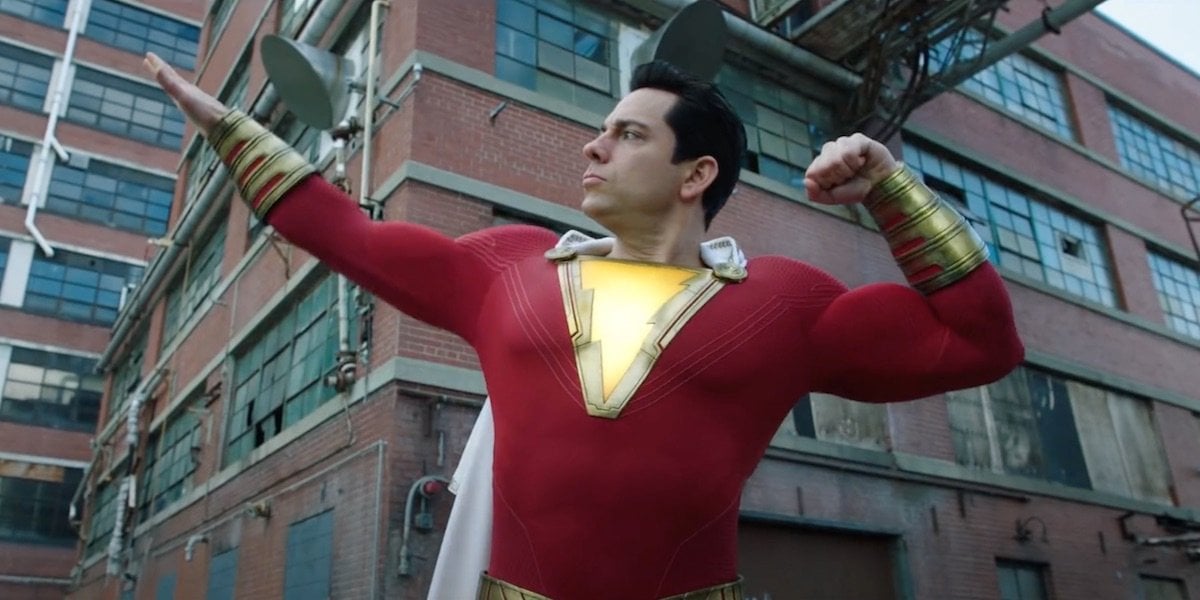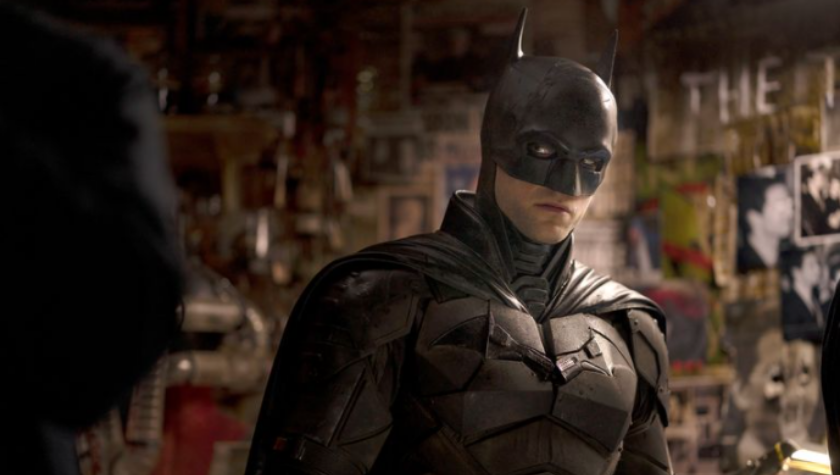Five steps to writing your own superhero
April 25, 2022
Conventional wisdom might discourage a writer to pen a spec script about an original superhero. It’s all about established IPs and superheroes that audiences have a history with, right? But a spec script is about more than just selling a script; it’s about creating a calling card for yourself as a writer. Even if the script you write never becomes a produced film, it doesn’t mean it can’t establish you as a writer and what your specialty is to producers and execs in the industry. If you love superhero movies and would love to one day write an installment in one of the numerous superhero franchises, writing an original superhero spec can work as an effective writing sample.
This is exactly what screenwriter Jeremy Slater did with his original spec Man of Tomorrow. The script never got made into a movie, but it received much acclaim and placed Slater on the right people’s radars. He was hired to write the 2015 Fantastic Four reboot and is now the head writer for the Disney+ miniseries Moon Knight (based on the Marvel Comics character).
His spec Man of Tomorrow was a dark, noir-ish superhero story involving two characters who shared some similarities to Superman and Batman but were likewise very different. Slater utilized a few fundamental superhero movie tropes while subverting the more superficial ones. This is a great approach for any genre, but especially for a superhero script. You’ll need to establish how your script is different from all the other superhero movies out there, while at the same time establishing that you understand the core elements that always work and appear repeatedly in these films.
Here are five tips for writing your own superhero.
Read More: 5 Steps for Developing Great Characters
1.) Give your hero a tragedy tied to their origin
Bruce Wayne’s parents were famously murdered in front of him, which is why he grew up to become the vigilante, Batman. Every cinematic version of Batman from the series launched by Tim Burton in 1989, to Christopher Nolan’s Dark Knight trilogy, to this year’s Matt Reeves-helmed reboot, The Batman, features this moment as the defining traumatic event in Bruce Wayne’s life. Even Todd Phillips’ Joker spin-off featured a young Bruce Wayne and — not-so-spoiler alert — once again his parents get murdered right before his eyes.
Similarly, Peter Parker’s guilt for being indirectly responsible for his Uncle Ben’s death has been adapted for the first two Spider-Man film series. In the latest MCU incarnation, many of Uncle Ben’s attributes have been bestowed on Aunt May and there’s no direct reference to the original backstory, but there is a possible allusion to it with Peter Parker’s dialogue in Captain America: Civil War: “When you can do the things that I can do and you don't do anything, then you are responsible.”
This trope of something traumatic occurring in the hero’s backstory and its profound impact on who they are to become is repeated again and again in superhero stories: Superman’s homeworld being destroyed; the Punisher’s family getting murdered; Deadpool's disfigurement; the various characters in the X-Men series being discriminated against for being mutants, and more. To give your hero some gravitas, give them a traumatic backstory or origin.
2.) Give your hero flaws to overcome
Some superheroes are more flawed than others. Tony Stark (aka Iron Man) is initially portrayed as cocky and self-centered, and although his womanizing and alcoholic traits from the comic books are played-down, they’re still present to a degree. From 2008’s Iron Man to 2019’s Avengers: Endgame, Tony Stark has a strong arc in which he slowly becomes humble and more selfless. These initial character flaws, however, were one of the things that made Stark so engaging as a character. Many of the most popular superheroes have character flaws that arise at crucial moments and make certain situations worse: Peter Parker can succumb to anger and frustration; Bruce Wayne can become too narrow-focused and obsessive; Clint Barton (aka Hawkeye) is really good with a bow-and-arrow but that’s pretty much all he can do, making him the ultimate underdog superhero.
Even some seemingly flawless superheroes have a few flaws beneath the surface: Thor can be arrogant; Captain America naive, and Superman has been portrayed as occasionally surrendering to feelings of isolation and even outrage. A one-note, perfect superhero is not only going to be unrelatable to most people, but they’re also not going to engage an audience.
3.) Give your hero constant conflict and drama
The X-Men are constantly battling discrimination and the fear they inspire in non-mutants. The Avengers and Fantastic Four are often portrayed as dysfunctional families. In Wonder Woman 1984, Diana resurrects her deceased lover Steve Trevor, but at the cost of losing her powers and must make the most difficult of choices. Likewise in Superman II, Clark Kent must decide between his powers and being romantically involved with Lois Lane. Bruce Wayne is constantly struggling to balance his personal life with the life of a costumed crimefighter.
Perhaps the greatest example of this trope is Spider-Man. From the comic books to the animated series to the films, Peter Parker is constantly struggling and overwhelmed by life. Unlike Bruce Wayne and Tony Stark, Parker is not financially well-off and he must balance his civilian responsibilities while fighting crime. Parker is also often dealing with personal conflicts, whether they’re romantic or platonic relationships. He has frequent breakups, love triangles, and periodic deaths of loved ones that are constantly challenging Parker. As a result, He’s more than once considered giving up being Spider-Man because it’s so hard for him to balance everything. This is perhaps why he is arguably the most beloved of all the superheroes: he most reflects the daily conflict and drama of the everyman. Just throw a supervillain into the mix, and it’s impossible not to root for Peter Parker as he grapples with his complicated life. When creating your own superhero, remember the more conflict and drama you throw at them, the more people will get caught up in their story and root for them.
4.) Give your hero a personally or philosophically connected villain
In the Spider-Man series, the villain is often a mentor turned adversary (e.g., the Green Goblin, Doctor Octopus, the Lizard), and in most cases, they’re also a dark reflection of Parker (highly intelligent, into science, etc.). In two of the film series, Parker also has to deal with a best friend turned adversary (Harry Osborne) which results in his personal life and crimefighting life tragically come to a head.
Thor’s nemesis is his envious adopted brother Loki. In Black Panther, T’Challa battles his cousin, Erik Killmonger, who wants to avenge his father’s death. Professor X and Magneto were friends and colleagues before a philosophical rift placed them on opposite sides; Professor X takes a nonviolent approach when helping fellow mutants whereas Magneto is militant.
The Joker’s backstory with Batman has changed frequently in the films, but one thing always remains: they are reciprocal counterparts -- the Joker embraces anarchy and chaos while the Batman embraces control and order. Similarly, Superman and his nemesis Lex Luther represent dueling philosophies: Superman represents charity and Luther, self-interest. Another one of Superman’s main rivals is General Zod, who like Superman, originates from the ill-fated world Krypton. Whether it’s personally or philosophically, the more connected your villain is to your hero, the more their conflict will resonate with the audience.
5.) Give your hero a unique and distinguishing quality
Once you have these fundamental traits for your superhero, it’s time to also think outside the box. Back when Stan Lee and Steve Ditko created Spider-Man in 1962, teenage superheroes were usually portrayed as sidekicks or supporting characters. When they decided to make Peter Parker a teenager, one with a lot of problems at that, and make him the hero of the story, they were breaking the mold. So much so, that when the character first hit the big screen with Sam Raimi’s 2002 film Spider-Man, he still felt fresh to most audiences. In a similar fashion, the character of Deadpool subverted comic and film conventions by breaking “the fourth wall” and acknowledging that he’s in a fictional universe.
Finding that new hook or angle will help distinguish your superhero from the rest of the heroic pack. As you build your character, consider their arc and how to write a character-driven plot. In general, once you’ve got the fundamentals down in your chosen genre, don’t be afraid to be idiosyncratic and bold. As the popular screenwriting adage goes: same, but different.
Written by: Edwin Cannistraci
Edwin Cannistraci is a professional screenwriter. His comedy specs PIERRE PIERRE and O’GUNN both sold with more than one A-list actor and director attached. In addition, he’s successfully pitched feature scripts, TV pilots and has landed various assignment jobs for Universal, Warner Bros, Paramount and Disney.



